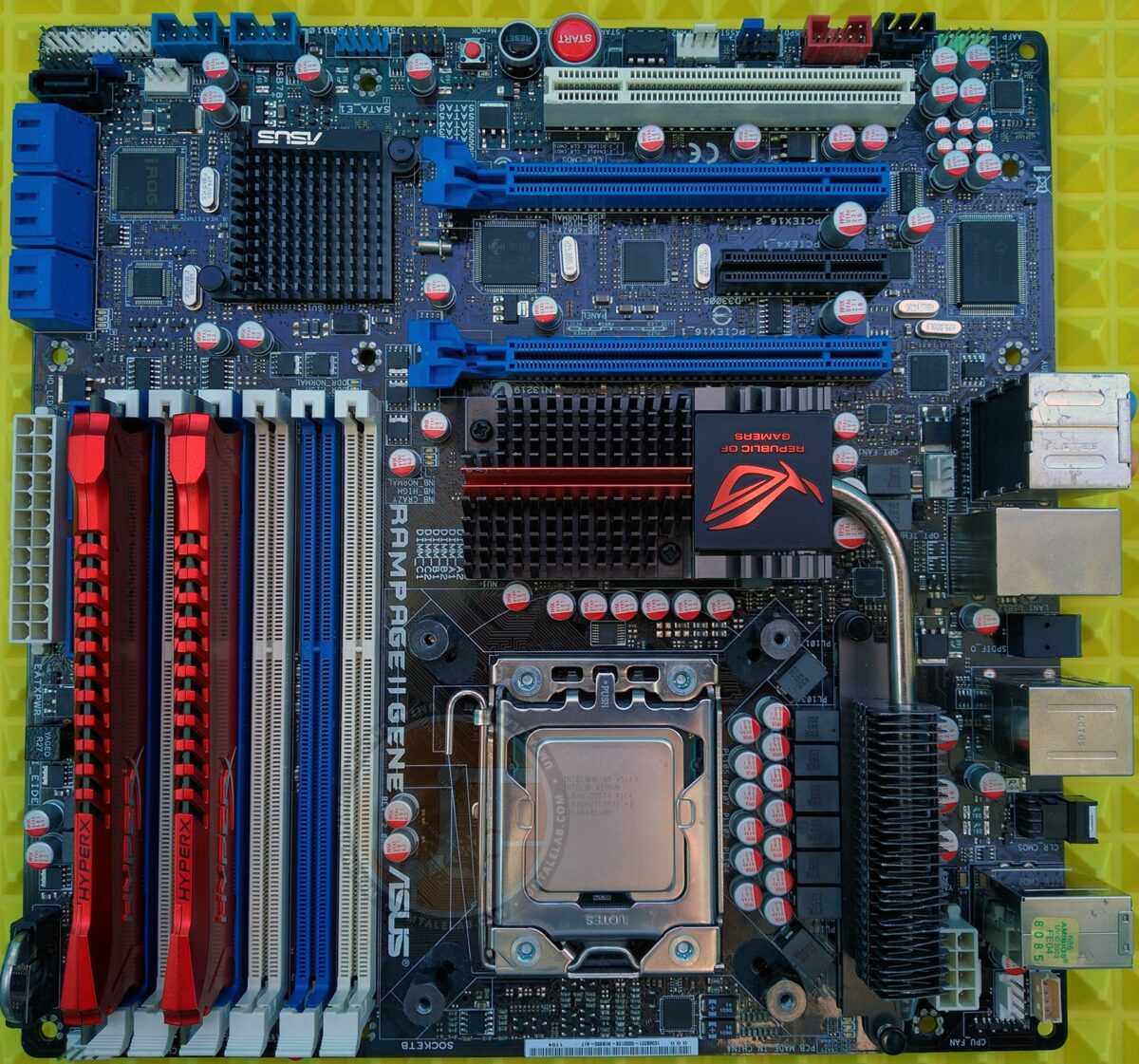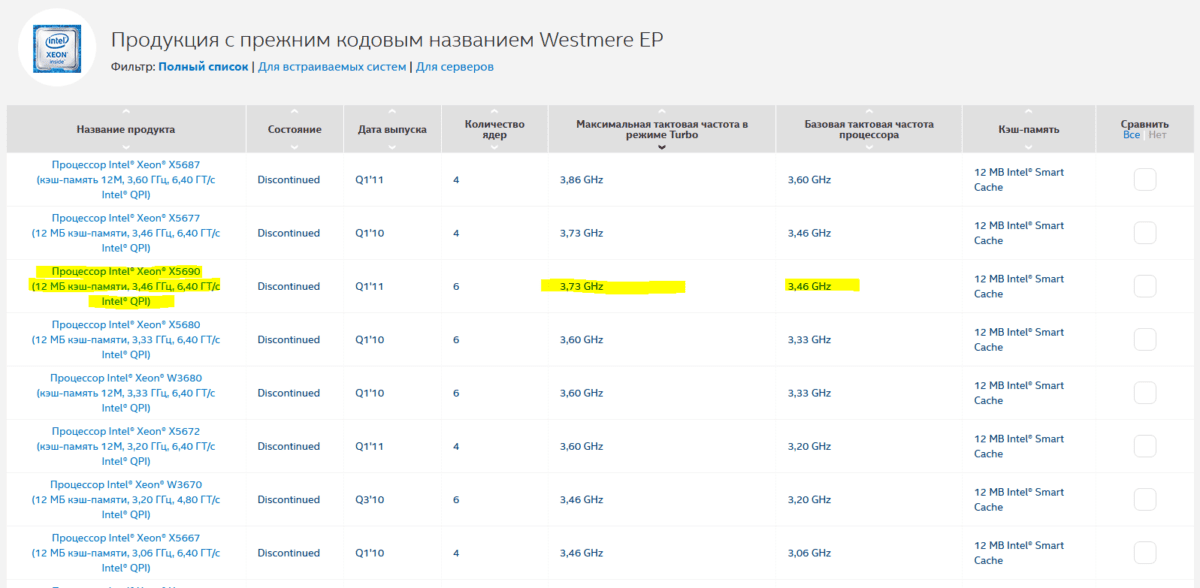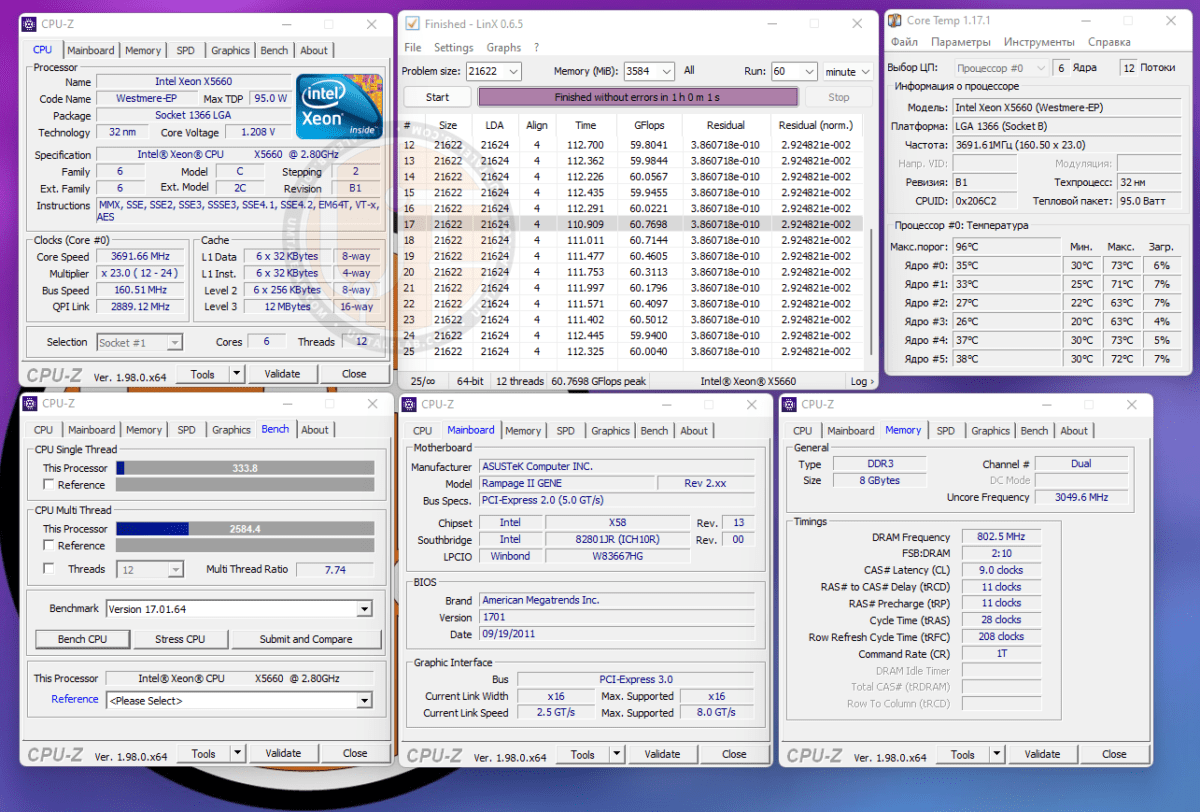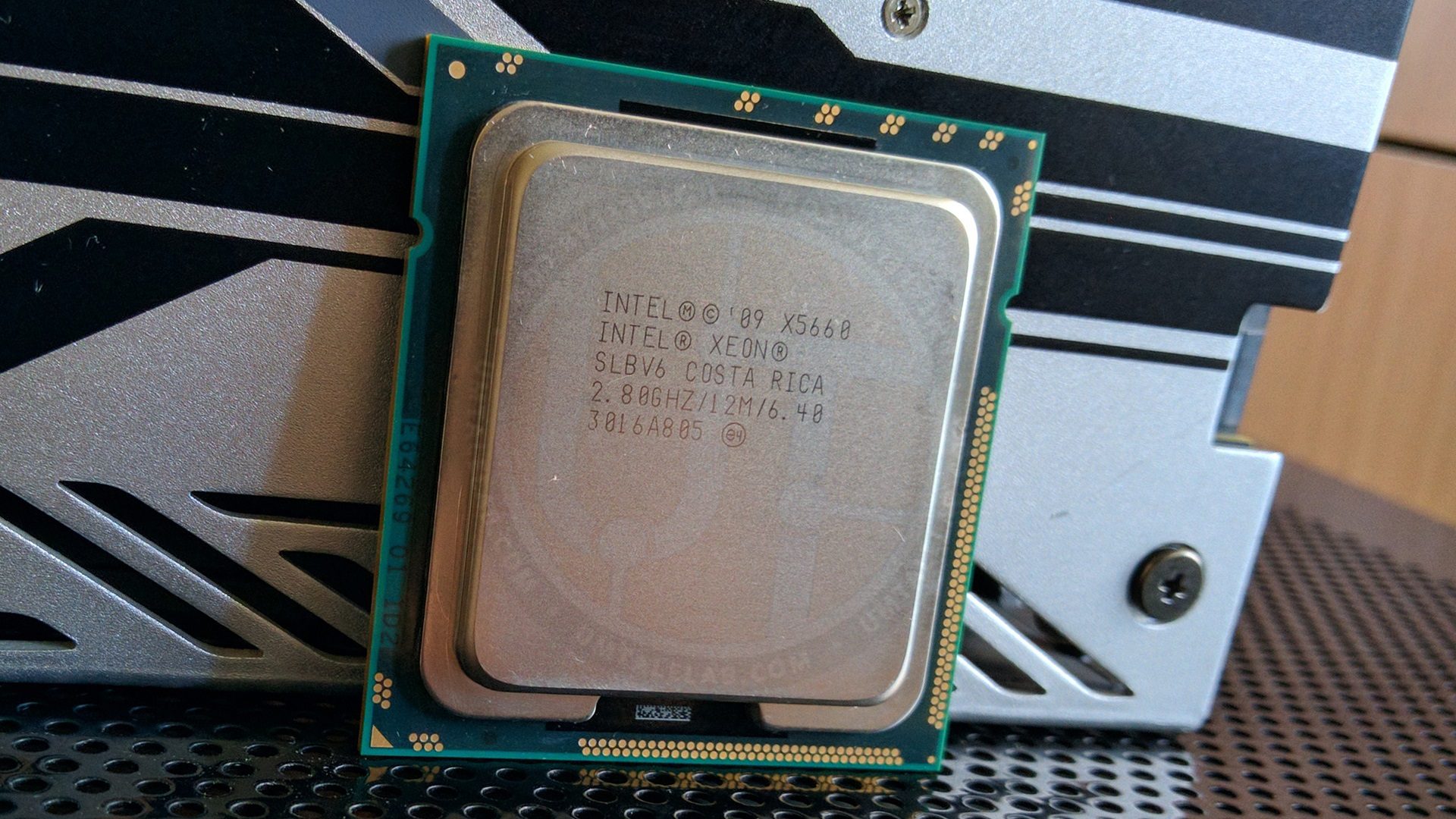
In this article, we will continue to study the overclocking potential of the LGA 1366 platform processors. Next in line is the 6-core, 12-thread Xeon X5660 chip.
At the very beginning of the “Chinese” renaissance of the LGA 1366 platform (2015-2016), this chip was not very popular due to its exorbitant price (relative to younger brothers), however, due to the X5660 having a relatively high multiplier, it aroused some interest among overclockers.
On paper, this looks very logical: the higher the multiplier, the lower it is necessary to overclock the BCLK bus. This, of course, has a positive effect on the stability of the final overclocking. However, is it really that important? Will the increased multiplier help the X5660 chip to take a higher frequency than its younger brother X5650? Let’s check it out.
Processor
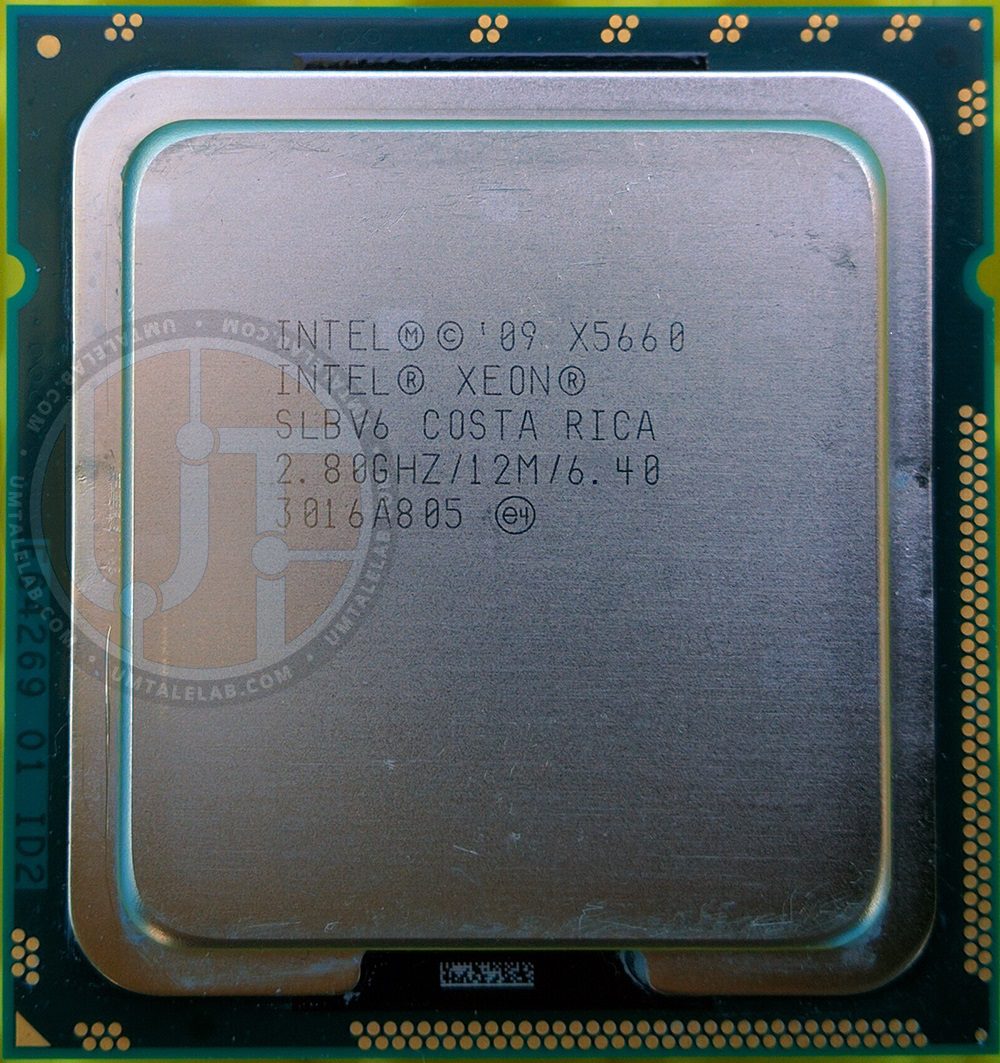
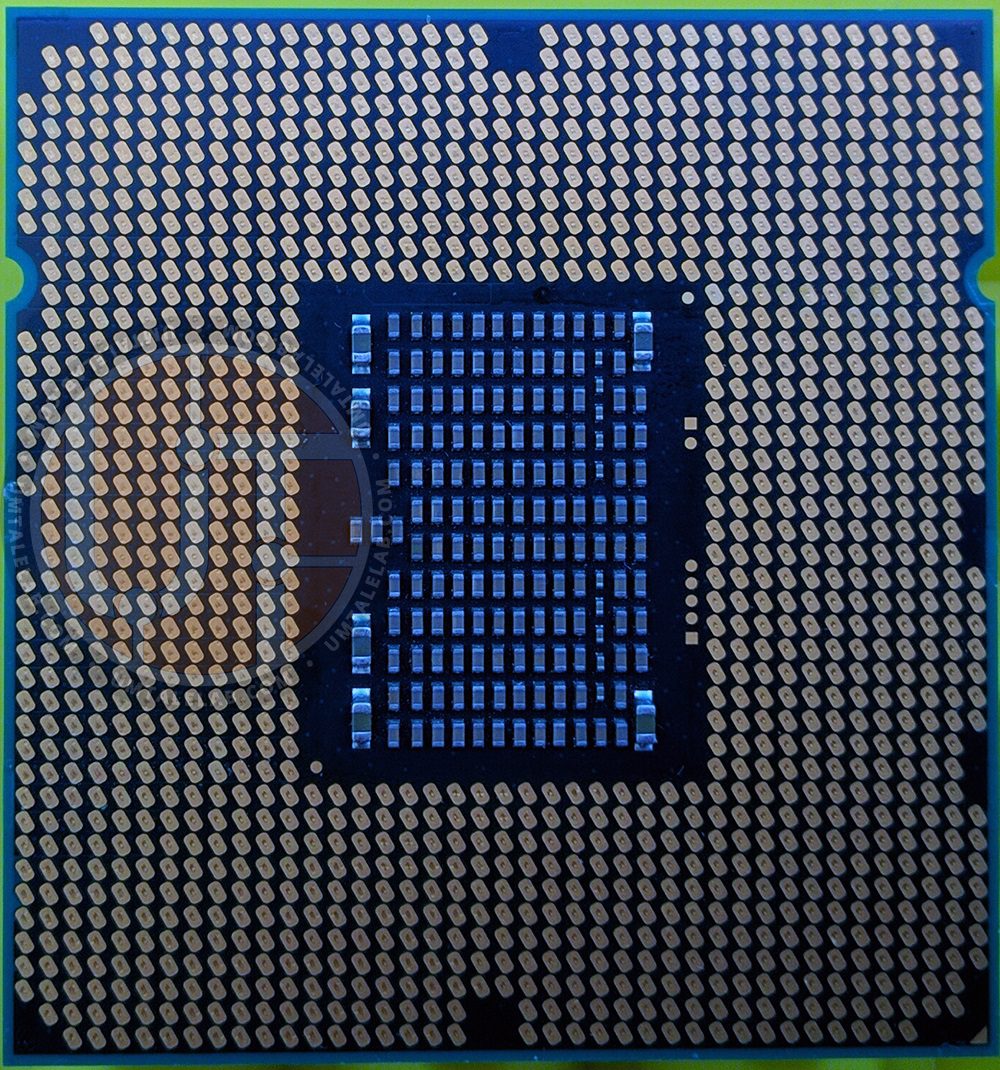
Specifications X5650
| Model | Xeon X5660 |
|---|---|
| Technical process | 32 nm |
| Cores | 6 |
| Threads | 12 |
| Base frequency | 2800 MHz |
| Maximum frequency in Turbo Boost | 3200 MHz (1 — 2 cores) 3066 MHz (3 — 6 cores) |
| Supported technologies | MMX instructions SSE / Streaming SIMD Extensions SSE2 / Streaming SIMD Extensions 2 SSE3 / Streaming SIMD Extensions 3 SSSE3 / Supplemental Streaming SIMD Extensions 3 SSE4 / SSE4.1 + SSE4.2 / Streaming SIMD Extensions 4 AES / Advanced Encryption Standard instructions EM64T / Extended Memory 64 technology / Intel 64 NX / XD / Execute disable bit VT-x / Virtualization technology VT-d / Virtualization for directed I/O TBT / Turbo Boost technology TXT / Trusted Execution technology Enhanced SpeedStep technology |
| Video core | – |
| L2 Cache (per core) | 256 Kb |
| L3 Cache | 12 Mb |
| Multiplier | 21 |
| TDP | 95 W |
| Max. CPU/core lid temperature | 81/96 C |
| approximate cost | 8-11$ |
Of the currently required technologies, the X5660 has only the SSE4.2 instruction set in its arsenal, but Westmere-EP does not have the vital AVX extension, which further reduces the relevance of this CPU.
The code name of the Intel Xeon X5660 chip is Westmere-EP (Westmere architecture – Nehalem shrink). Under the heat distribution cover of this CPU is one 32-nm six-core monolithic die of revision B1.
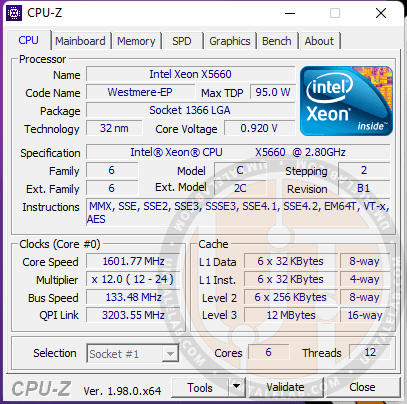
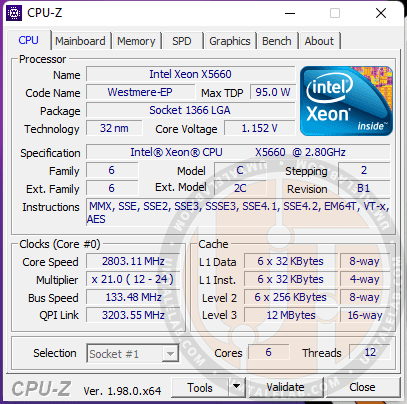
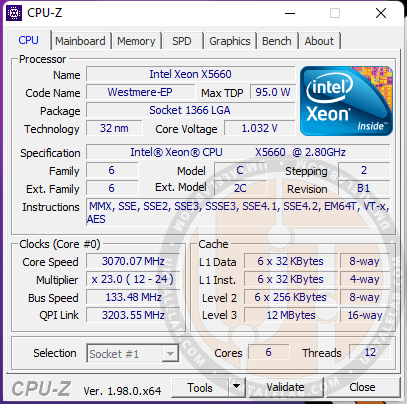
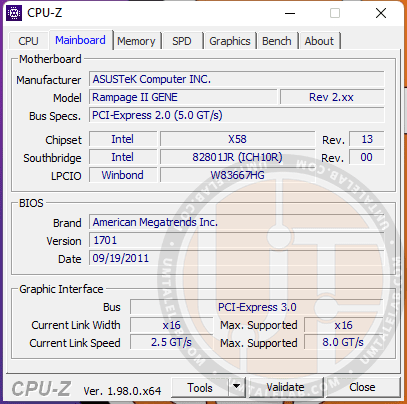
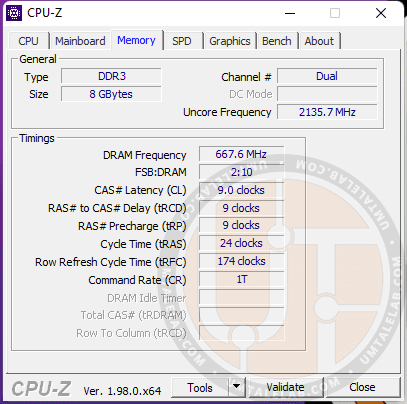
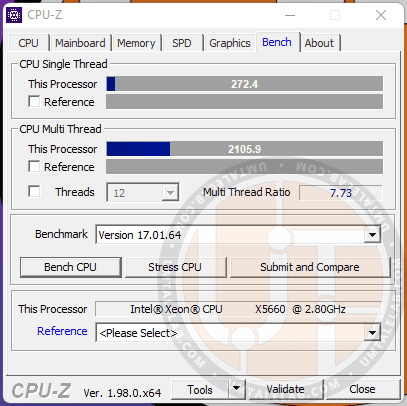
The Xeon X5660 processor has six cores, and twelve threads with a base frequency of 2800 MHz. The maximum turbo boost frequency for one core is 3200MHz, and for all six – 3066MHz. During idle times, the frequency of the test subject can drop to 1600 MHz, which can significantly save energy.
The chip has at its disposal 256KB of L2 cache per core and as much as 12MB of total L3 cache.
The memory controller and L3 cache of the Westmere-EP should run at 2667MHz, but for some reason, the ASUS Rampage II Gene motherboard defaults to 2133MHz, which is more typical of first-generation Core i7 processors than X-series Xeon chips. Let’s leave this decision on the conscience of ASUS engineers.
The base voltage of the processor should be at the level of 1.200-1.350 volts, but the ASUS Rampage II Gene motherboard again intervenes in the matter, which even with a single core boost up to 3200 MHz does not allow this parameter to go beyond 1.200 volts (checked with a multimeter).
Otherwise, fortunately, ASUS Rampage II Gene follows the Intel specifications: the X5660 chip works quite adequately with the officially declared three-channel DDR3 1333 MHz RAM (tested on three 2GB sticks, two 4GB modules were used for overclocking), and its TDP does not exceed 95 watts. And the last thing for Rampage II Gene is really a dogma. If on a conventional DELL T3500 motherboard, the chip passed the LinX test without dropping its frequency even by megahertz, then in our case, without disabling the “Turbo-boost power limit” parameter, the X5660 periodically reduced its frequency to 2933 MHz.
Thus, if you want to get maximum performance from your processor, it is still better to turn off the “Turbo-boost power limit” setting even if you are not going to overclock your CPU.
Test setup
- Processors — Xeon X5660, Xeon E5-2620v3;
- Cooling — Cooler Master Hyper 212 Black Edition (RR-212S-20PK-R1);
- RAM for overclocking LGA 1366 – 2 strips of 4 GB Kingston HyperX Savage HX316C9SRK2/8 with a total of 8 GB;
- RAM for LGA 2011 v3 — 4 sticks of 4GB each G.SKILL DDR4@1866MHz F4-2400C15S-4GNT with a total of 16GB (latencies 10-10-10-24);
- Motherboard for overclocking LGA 1366 — ASUS Rampage II Gene Rev 2 (Bios 1701);
- Motherboard LGA 2011 v3 – Kllisre X99-D8 (AD12) with a modified BIOS (Unlock Turbo Boost, as well as unlocked the ability to control timings);
- Video card — XFX R9-270X-CDFC@1150/1500MHz;
- SSD — KINGSTON 120GB SA400S37120G (Windows 11), KINGSTON 480GB SA400S37/480G (Storage-demanding games);
- HHD — Seagate 2TB ST2000DM008-2FR102 (Other games);
- Power supply — Chieftec GPS-1250C.
Overclocking Xeon X5660
To begin with, let’s look at what our Xeon X5660 chip is capable of at the base voltages of the cores, RAM, and memory controller.
If you do not understand technical processes, generations of processors, and so on, do not despair. In order to find out what your CPU model is theoretically capable of, you just need to find out the code name of its core (in our case, it is Westmere-EP), after which, simply “google” the top model based on the same core.
The fastest 6-core processor codenamed Westmere-EP is the Xeon X5690. Its base frequency is 3466 MHz, turbo boost reaches an impressive 3733 MHz, which means that in theory (I repeat, in theory), our chip is also able to work stably at a frequency of 3.4-3.7 GHz at stock voltages.
But it should be understood that in our case, the base voltage of the X5660 is slightly lower than the official Intel specifications, therefore, we will take 1.230 volts as a standard and check what our CPU instance is capable of at this voltage value.
Overclocking without raising the supply voltage
First, let’s check what our X5650 is capable of at 1.200 volts for the cores and 1.200 volts for the QPI/DRAM Core (Uncore/L3 cache and memory controller).
At the base voltage values relative to the Intel specifications, the X5660 chip performed as badly as possible. It failed to break the 3700MHz mark, stopping at 3691MHz for the cores and 3049MHz for the Uncore part (QPI/DRAM Core/L3 cache). To be perfectly frank, these are terrible results.
Recall that our last test subject X5650 was able to operate stably at a frequency of 3637 MHz for the cores and 2810 MHz for the QPI/DRAM Core at a voltage of 1.160 volts for the cores and 1.200 volts for the QPI/DRAM Core.
Overclocking with raising the supply voltage
At 1.3 volts for the cores and 1.250 volts for the QPI/DRAM Core, the X5660 chip only managed 3830/3064 MHz. What put us in a stupor: X5650 at a voltage of 1.230/1.230 reached the bar of 3927 MHz for the cores and 3034 MHz for the Uncore part (QPI/DRAM Core/L3 cache).
Personally, I was discouraged. No attempts to decrease/increase the QPI/Uncore multipliers, or other related voltages like CPU PLL or IOH, led to anything. After a little over 10 hours of testing, we found out that our chip is not able to function stably at a frequency of 4200 MHz even at a voltage of 1.420 volts.
We managed to stabilize the processor at a frequency of 4057/3175 MHz with a rather high core voltage of 1.340 volts, QPI / DRAM Core – 1.310 volts, CPU PLL – 1.850 volts, IOH – 1.25 volts, and DDR3 – 1.630 volts.
Our X5660 sample turned out to be extremely hot, unsuccessful, and literally disappointing. Moreover, this is putting it mildly. The same X5650 was able to boast a frequency of 4213/3255 MHz at a core voltage of 1.360 volts, QPI / DRAM Core – 1.290 volts, CPU PLL – 1.825 volts, and DDR3 – 1.69 volts.
Besides, if you read our previous article about X5650 overclocking, then at that time we also considered the overclocking result of the younger processors to be extremely weak. However, judging by the results of X5660 overclocking, the overclocking potential of the laboratory sample X5650 can be considered quite good.
However, it should be understood that overclocking is a lottery, and in fact, the test sample does not reflect the real picture of overclocking of all Xeon X5660 processors.
Xeon X5660: Base clock vs. overclock and Xeon E5-2620 v3
We bring to your attention express testing of the Xeon X5660 chip at a frequency of 3066MHz and 4057MHz in several games, benchmarks, and programs, as well as a comparison with the cheapest representative of the current budget LGA 2011v3 platform – Xeon E5-2620v3.
Programs and benchmarks
AIDA64 v6.50.5800
| X5660@2800-3066MHz | X5660@4057MHz | E5-2620v3@3200MHz | |
| Memory Read | 15964 | 20518 | 45365 |
| Memory Write | 12772 | 16549 | 45215 |
| Memory Copy | 14226 | 18377 | 45439 |
| Memory Latency | 73.6 | 57.4 | 68.6 |
| CPU Queen | 44244 | 64012 | 56119 |
| CPU PhotoWorxx | 6527 | 7823 | 26937 |
| CPU ZLib | 302.5 | 406.4 | 409.3 |
| CPU AES | 10336 | 13796 | 21707 |
| CPU SHA3 | 704 | 951 | 1765 |
| FPU Julia | 14674 | 20271 | 37758 |
| FPU Mandel | 7155 | 9775 | 19242 |
| FPU SinJulia | 6308 | 8423 | 6088 |
| FP32 Ray-Trace | 2089 | 2961 | 6655 |
| FP64 Ray-Trace | 1164 | 1629 | 3484 |
Cinebench R15
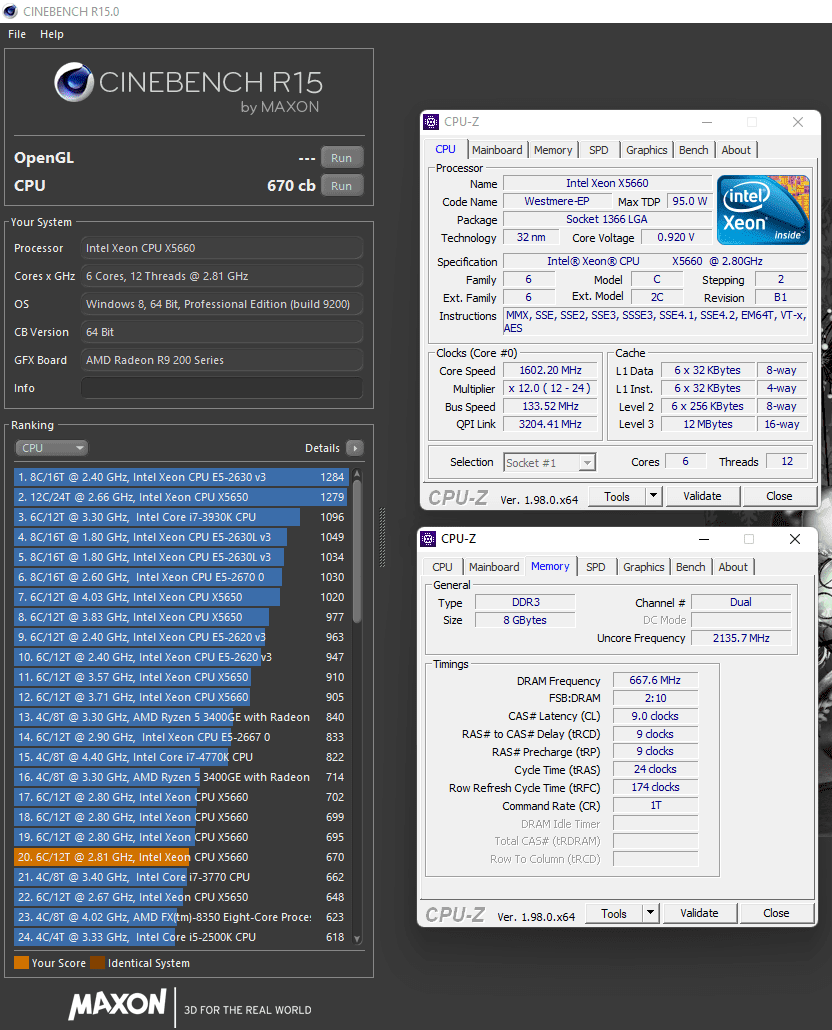
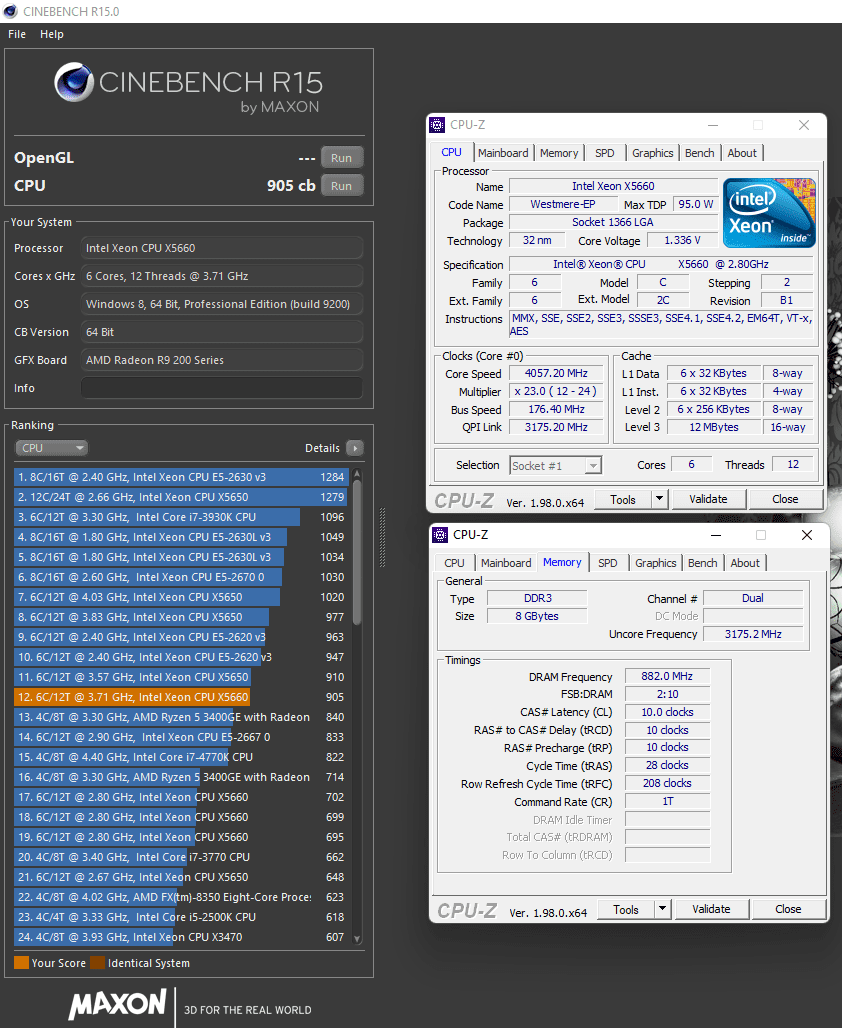
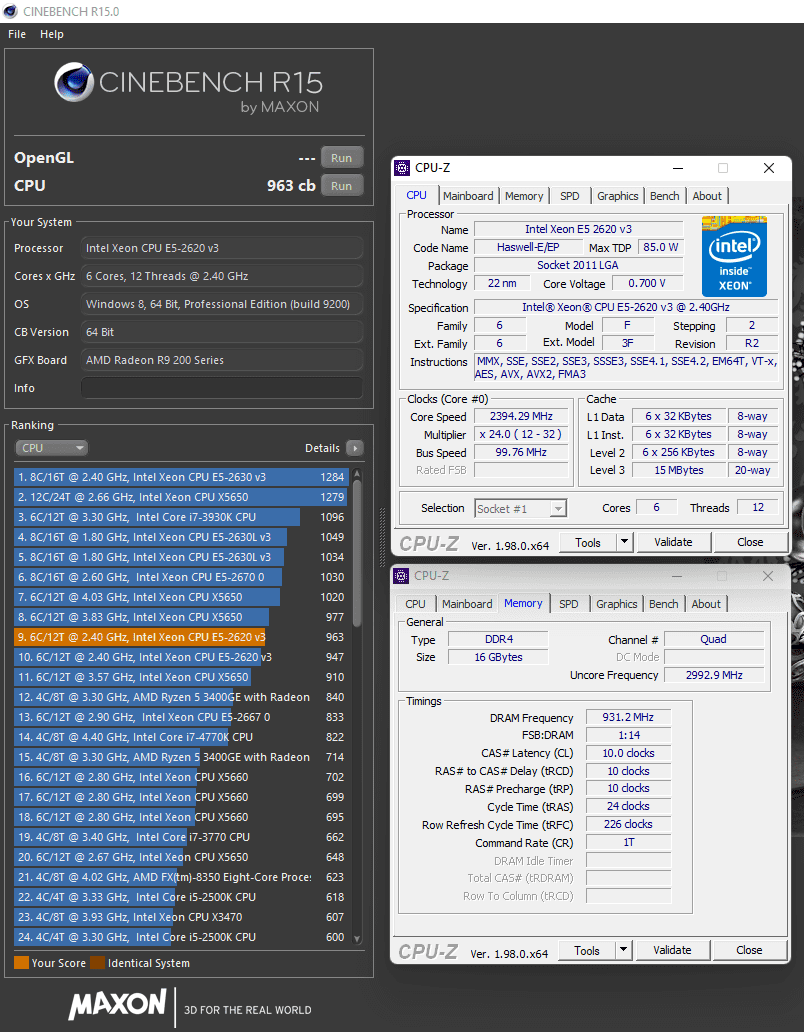
Cinebench R20
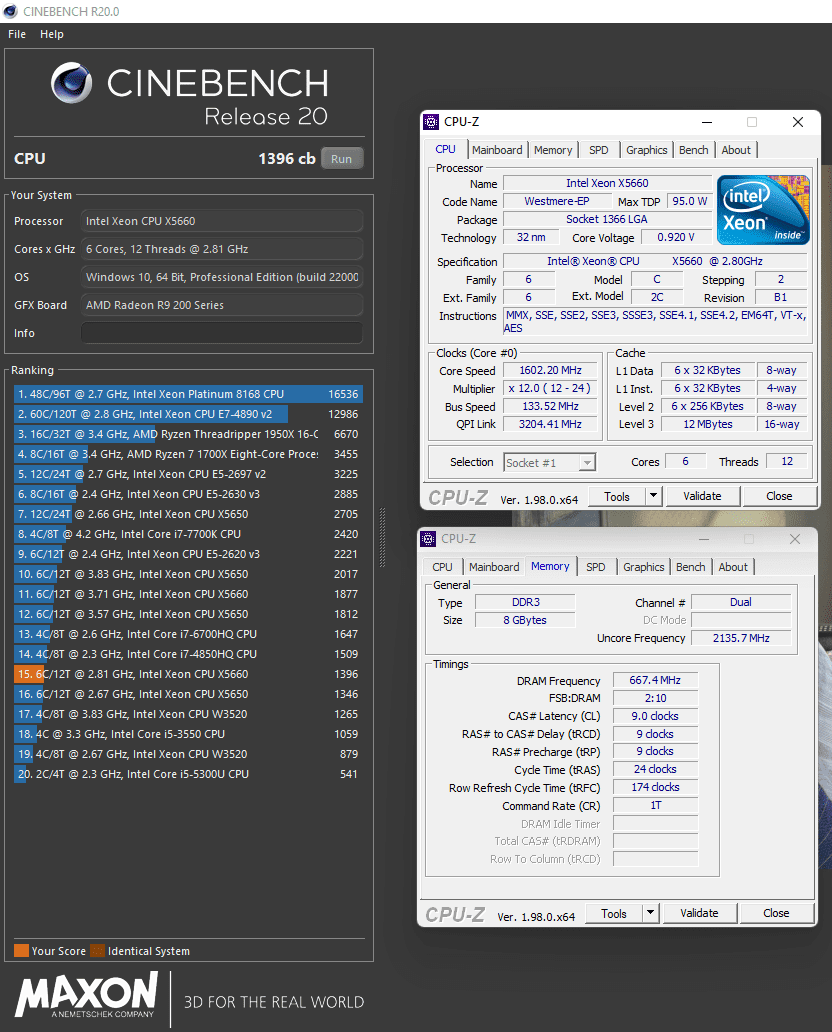

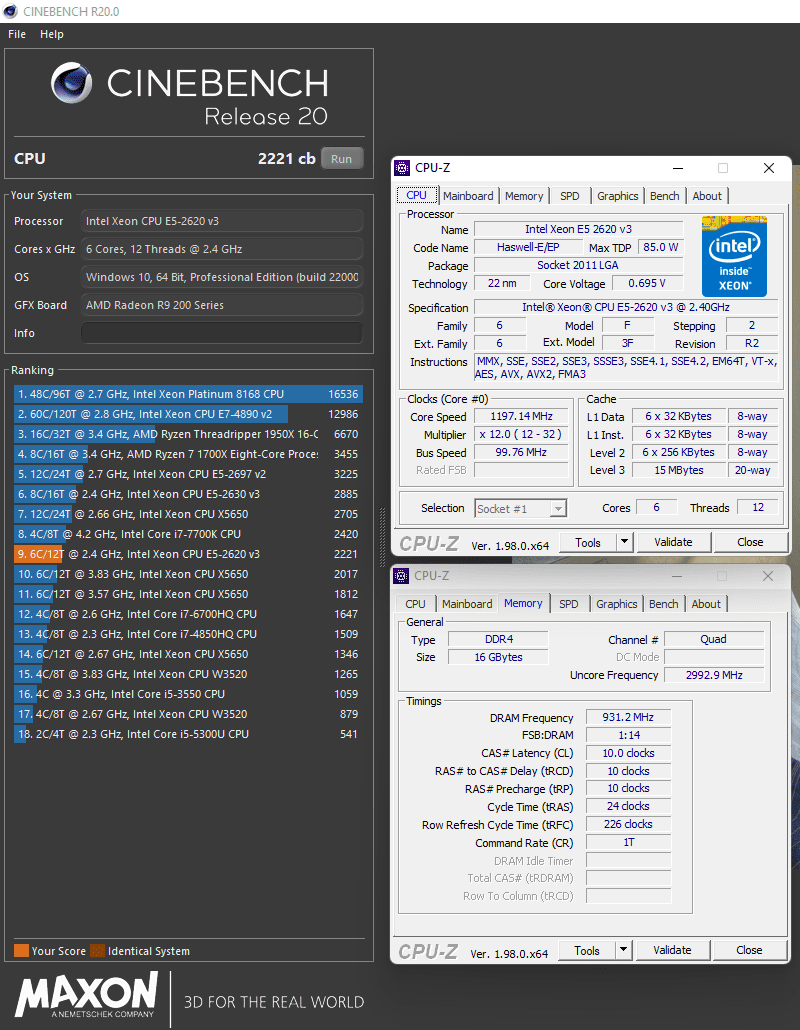
Cinebench R23
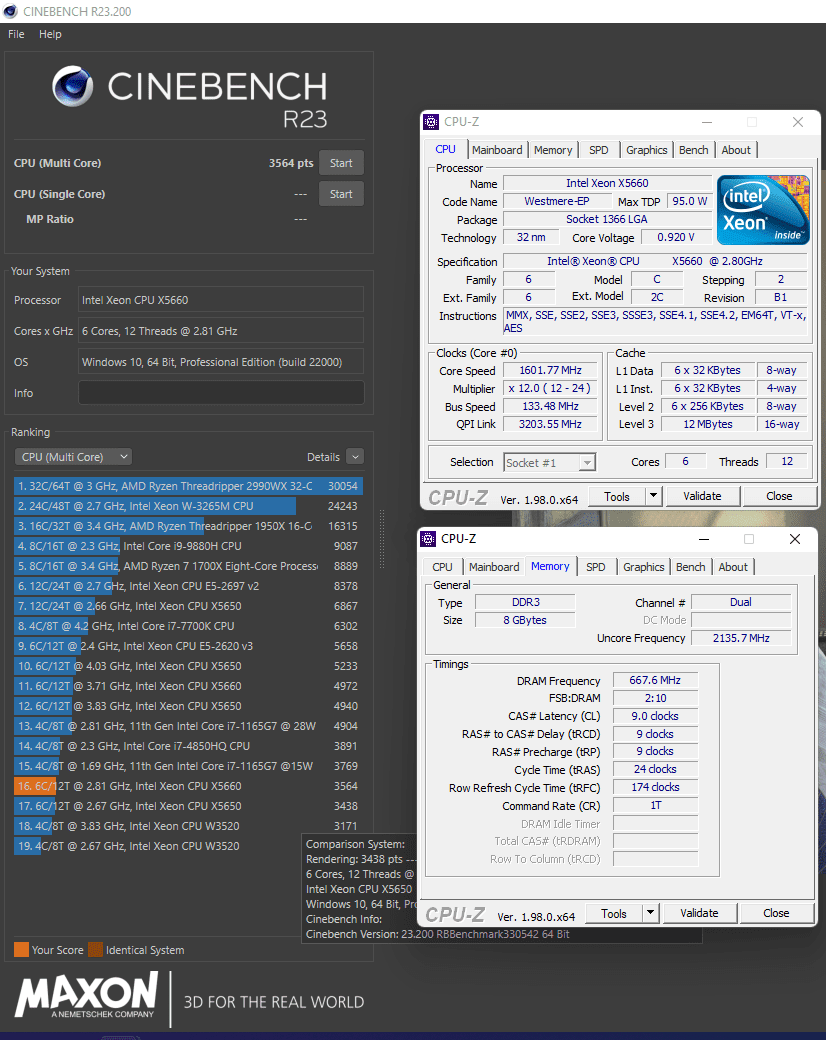


V-Ray 4
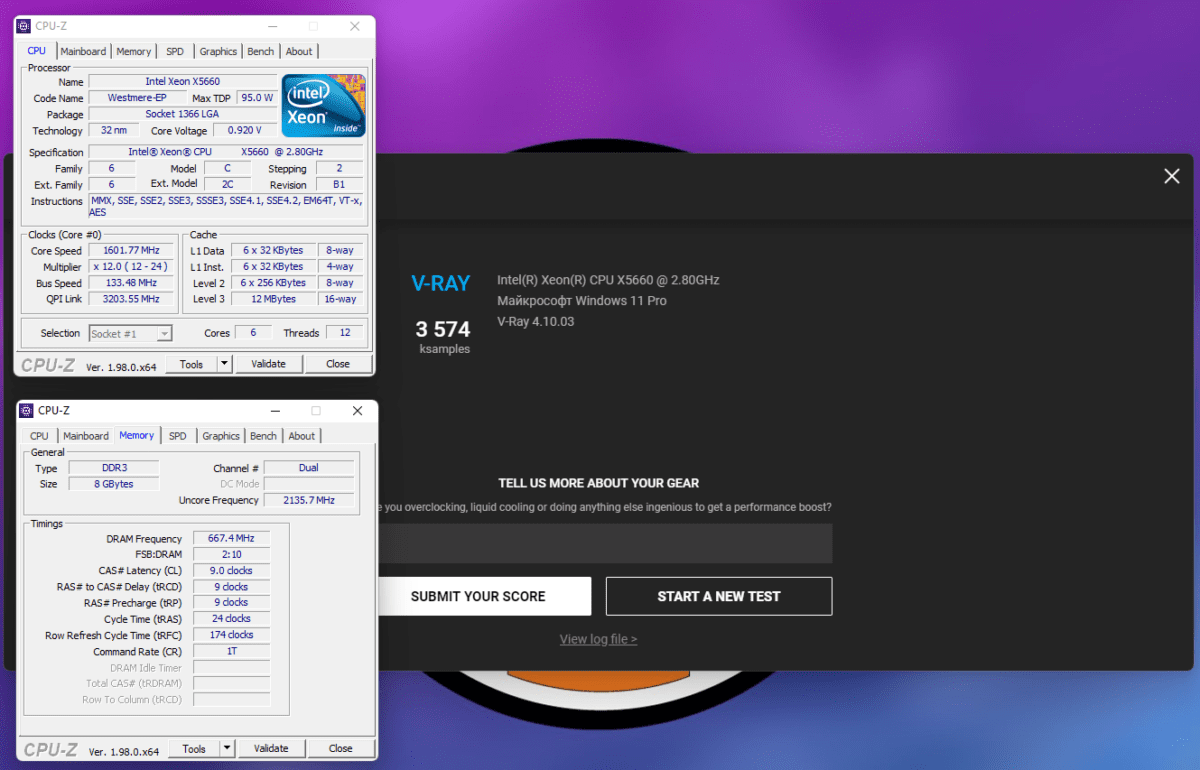

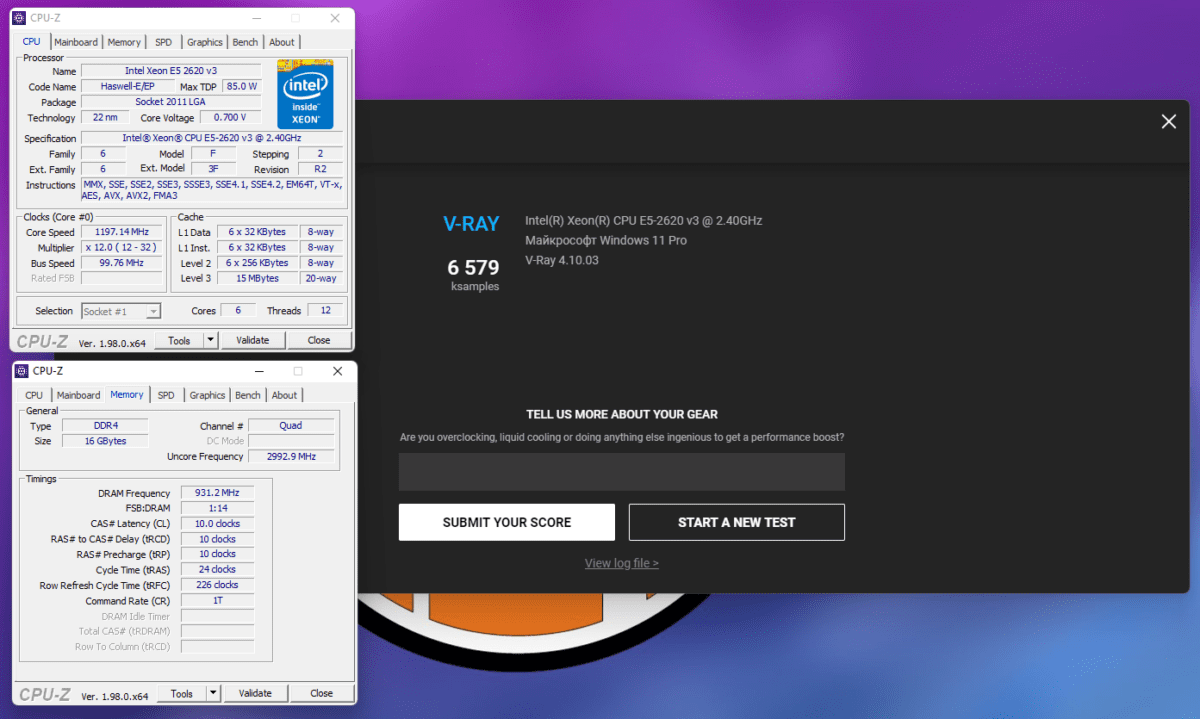
V-Ray 5
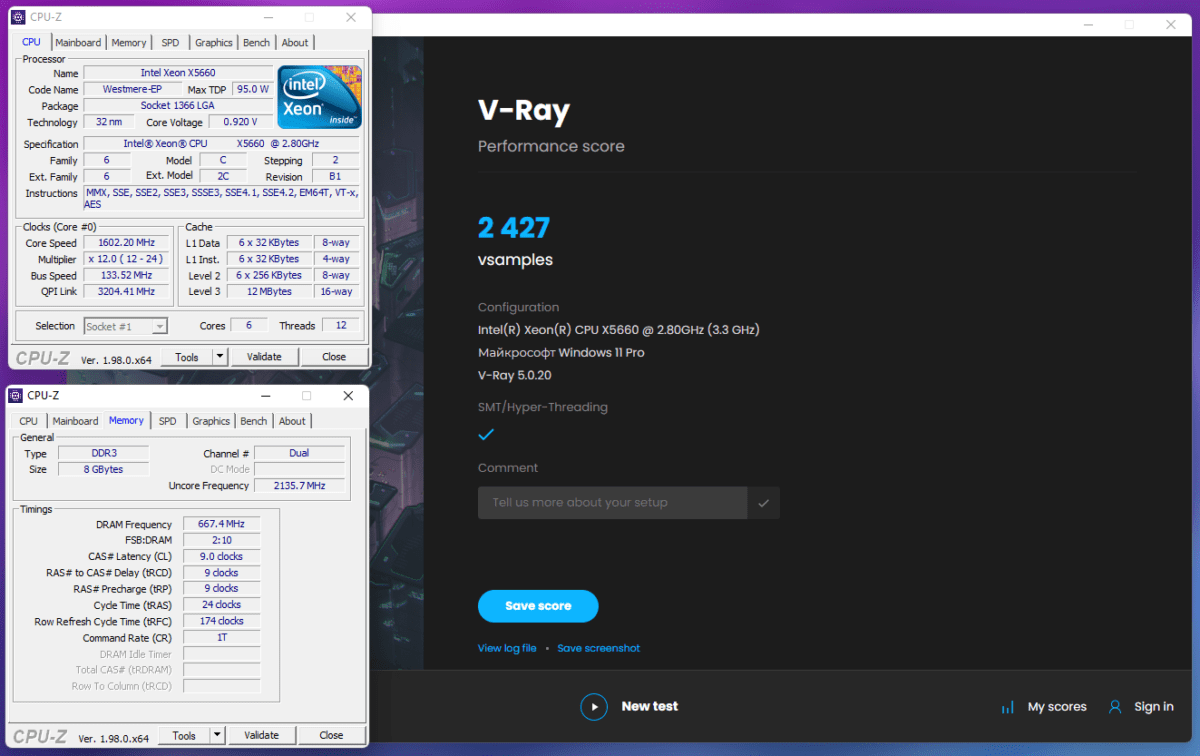
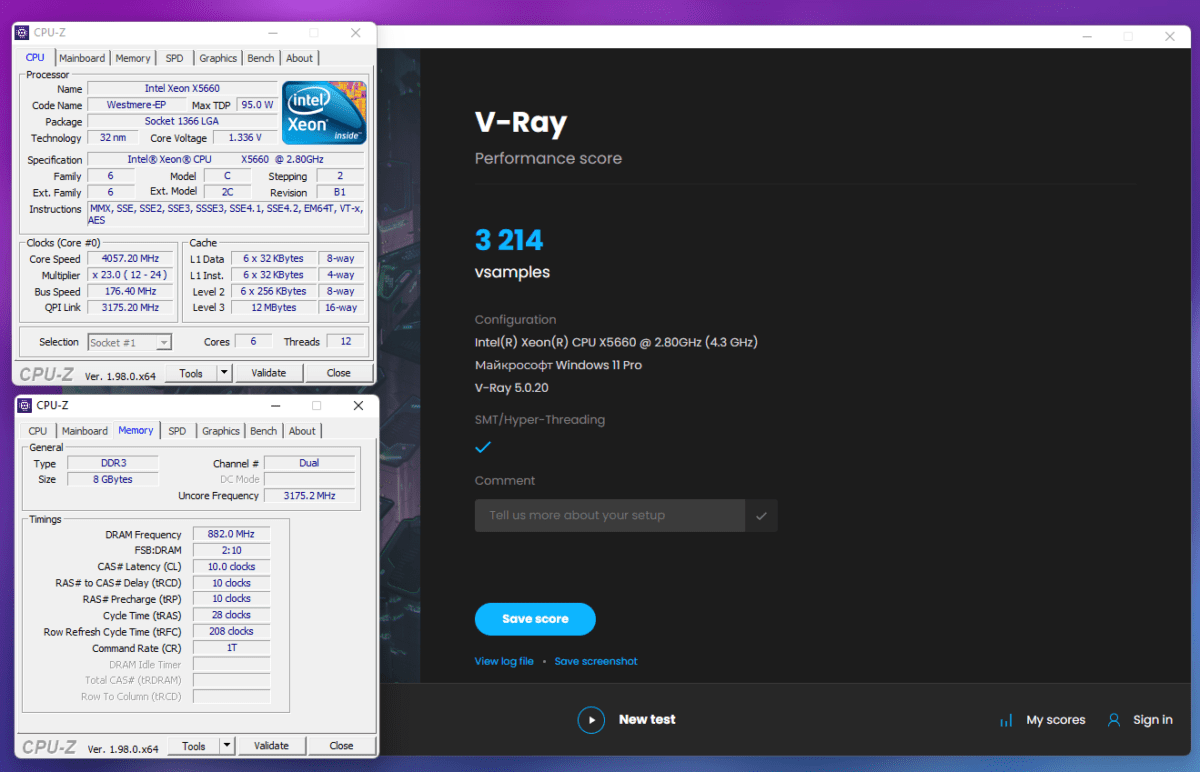
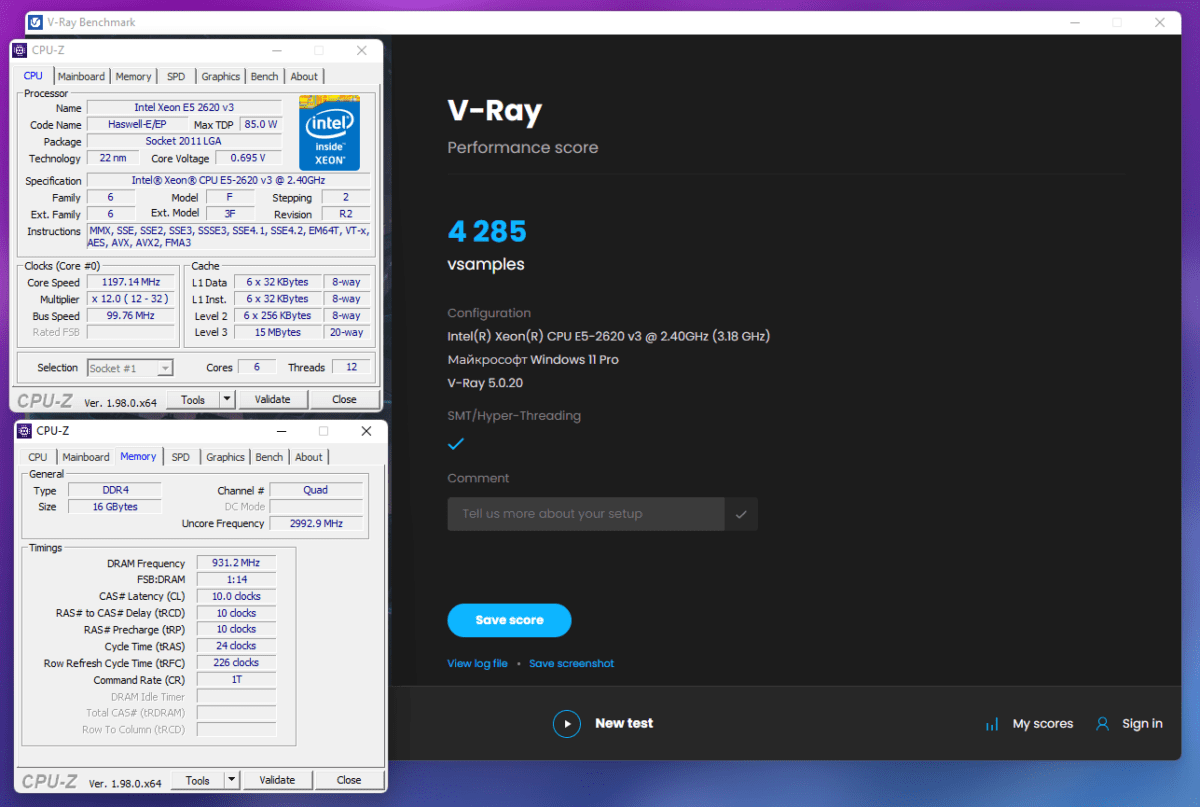
LinX
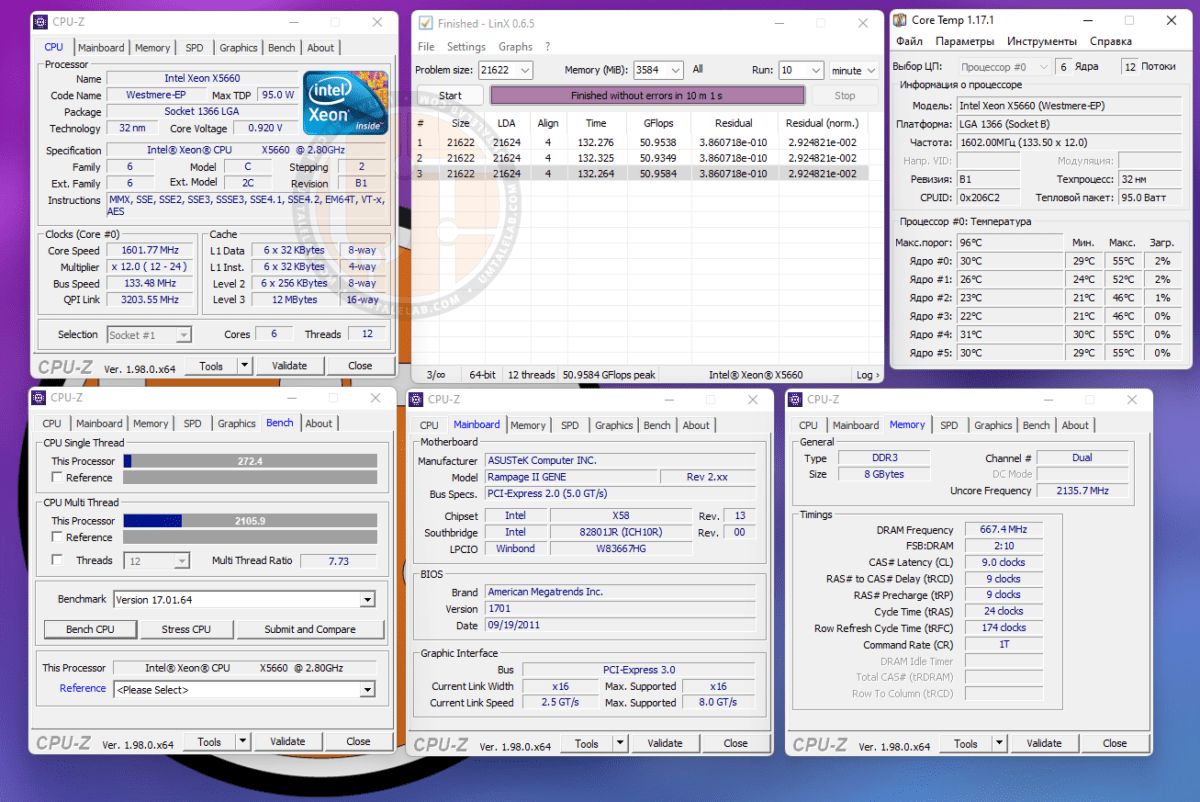
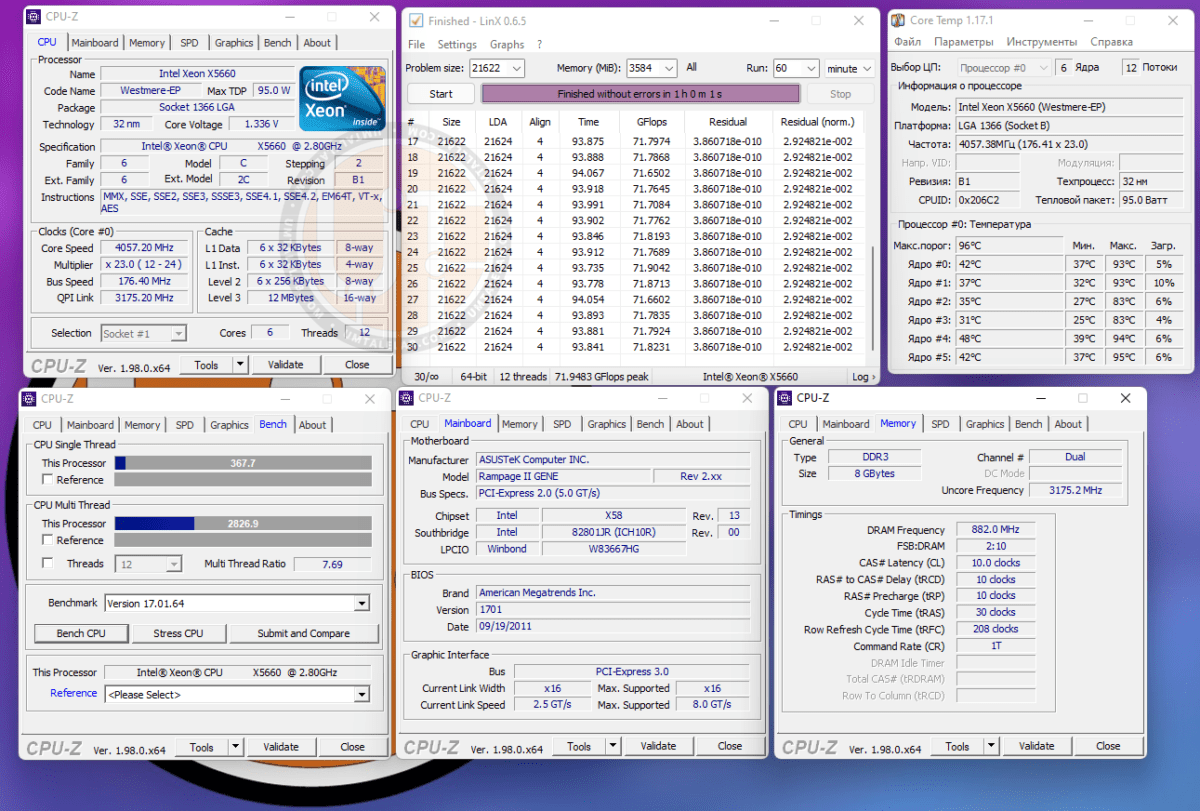
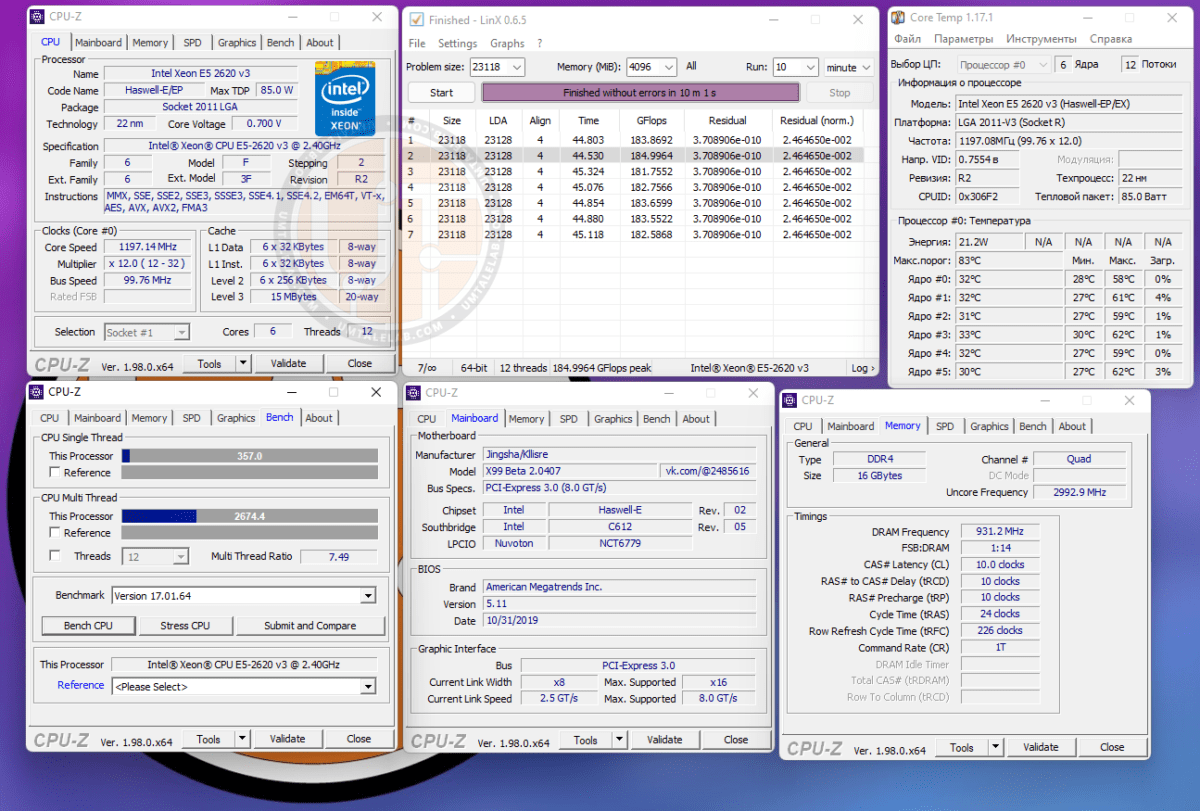
7-Zip
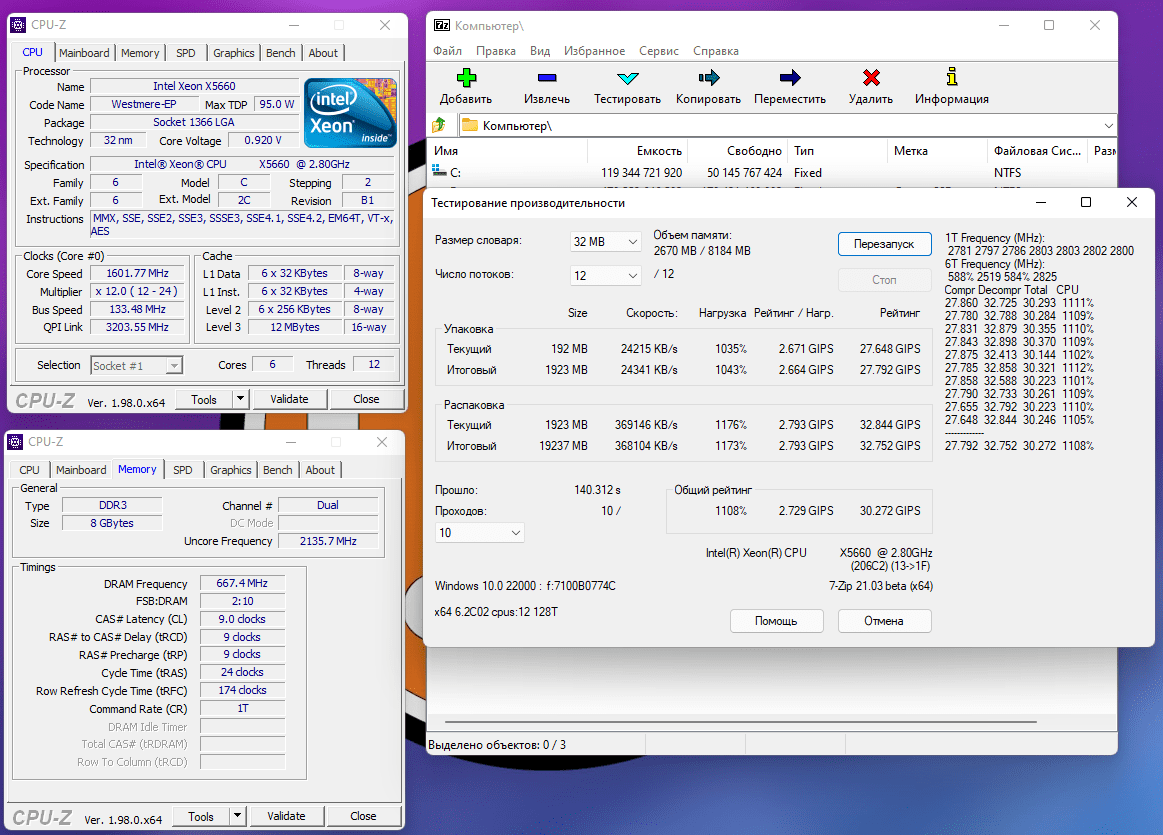
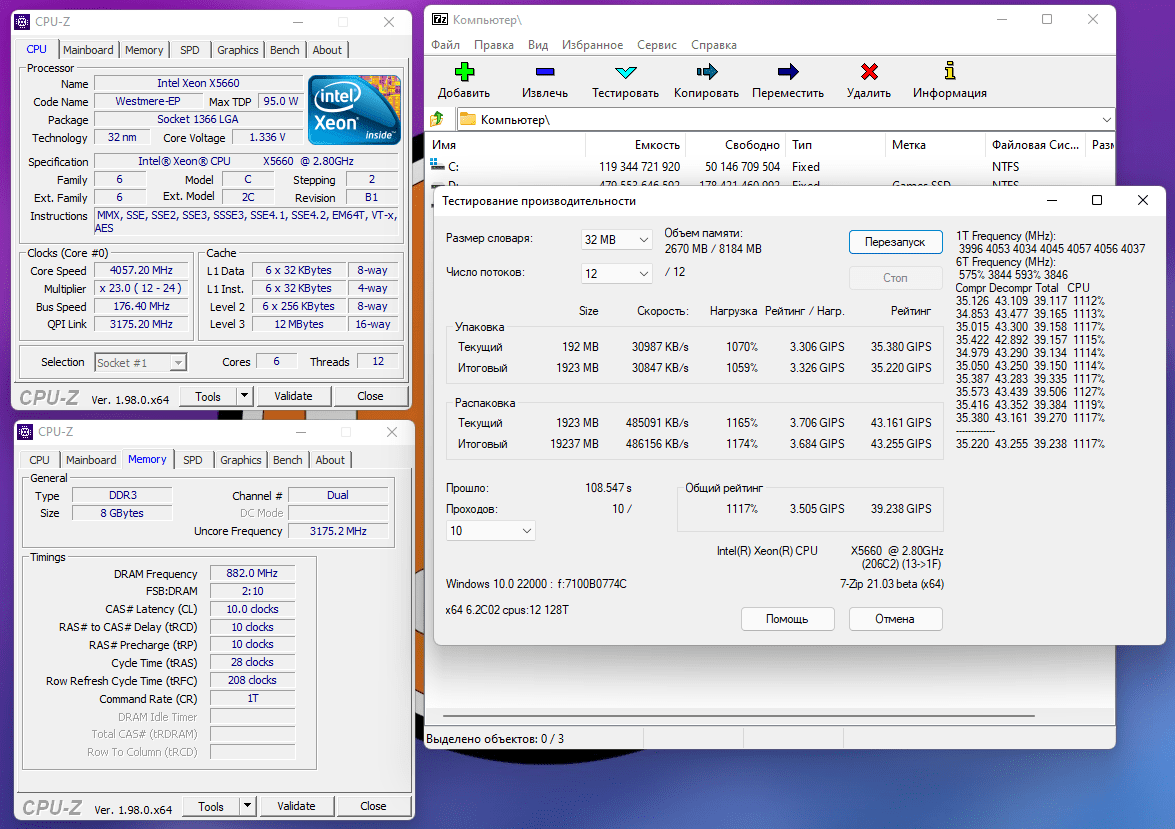
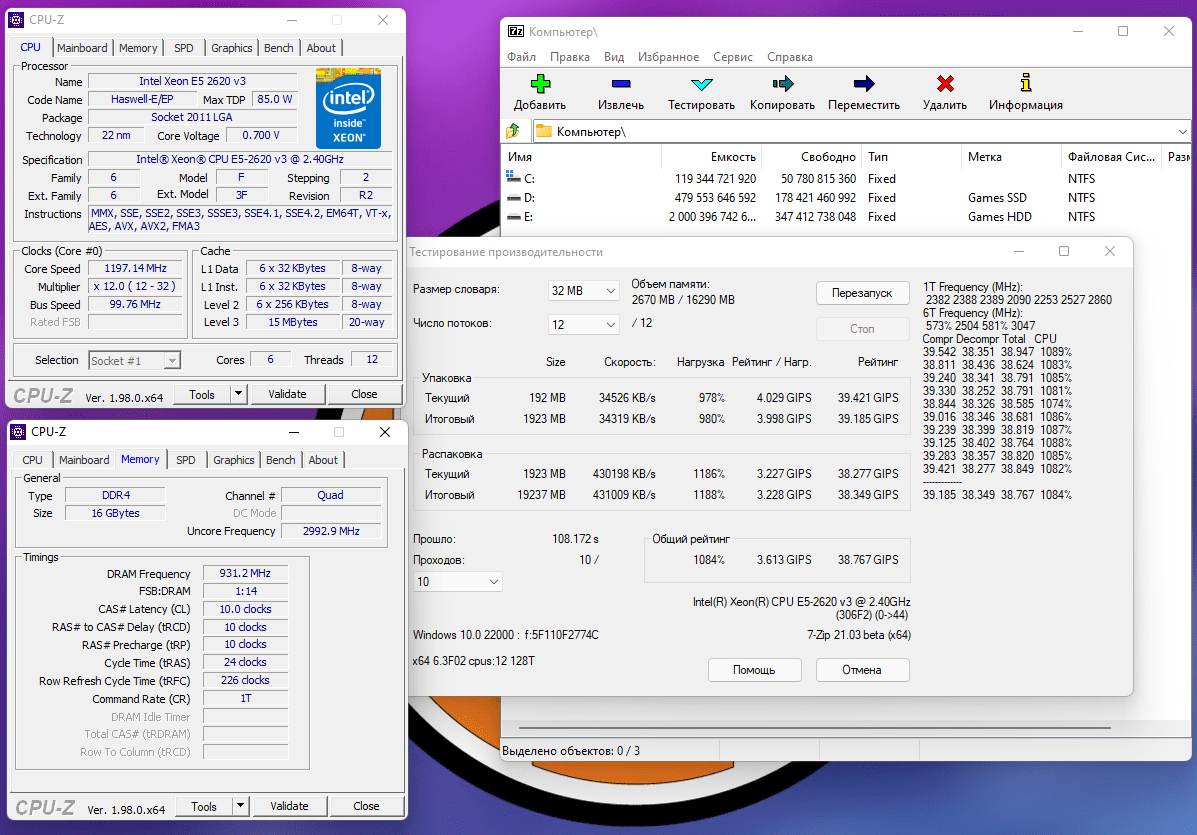
Summary table of X5660 test results in programs and benchmarks
| Benchmark | X5660@2800-3066MHz | X5660@4057MHz | E5-2620v3@3200MHz | Gain from overclocking | Difference between X5660@4057MHz and E5-2620v3@3200MHz |
| Cinebench R15 | 670 | 905 | 963 | 35.07% | +6.40% |
| Cinebench R20 | 1396 | 1877 | 2221 | 34.45% | +18.32% |
| Cinebench R23 | 3564 | 4972 | 5658 | 39.11% | +13.79% |
| V-Ray 4 | 3574 | 4899 | 6579 | 37.07% | +34.29% |
| V-Ray 5 | 2427 | 3214 | 4285 | 32.42% | +33.32% |
| LinX 0.6.5 | 50.95 | 71.81 | 182 | 40.94% | +153.44% |
| 7-Zip | 30272 | 38238 | 38768 | 26.31% | +1.38% |
The average performance increase among the benchmarks was ~36%, which is not bad because the clock speed was increased by only 32%. In addition, it is worth noting that in none of the seven benchmarks X5660@4057MHz could overtake E5-2620v3@3200MHz.
Games
Far Cry 5
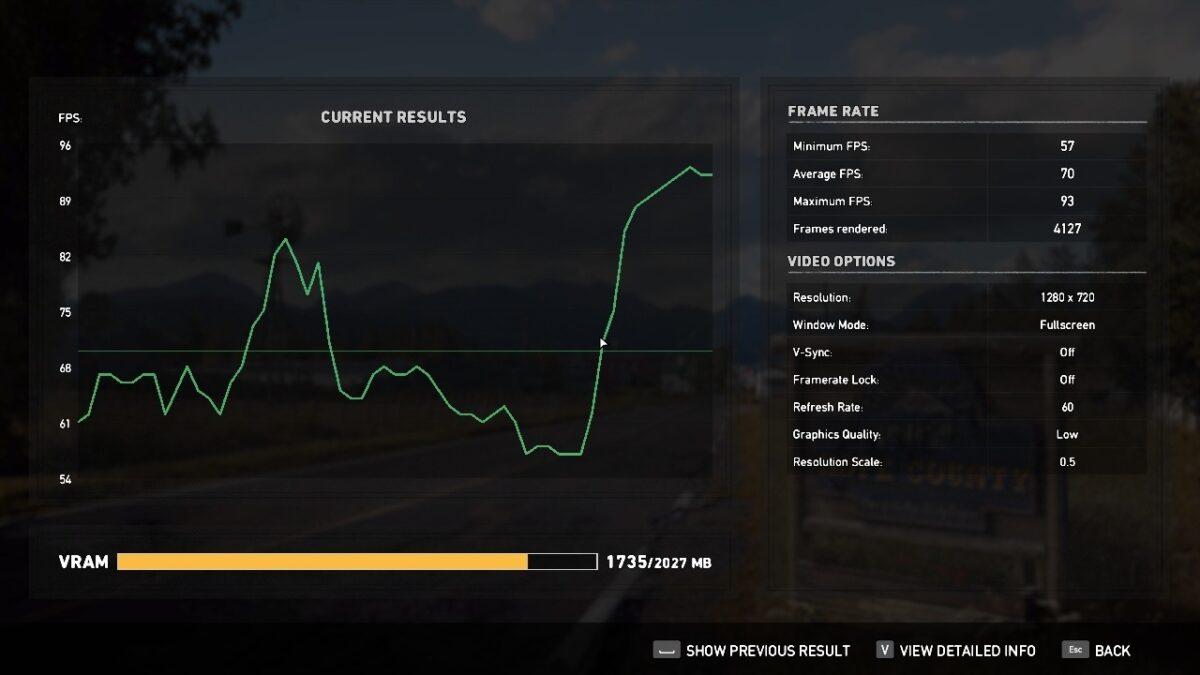
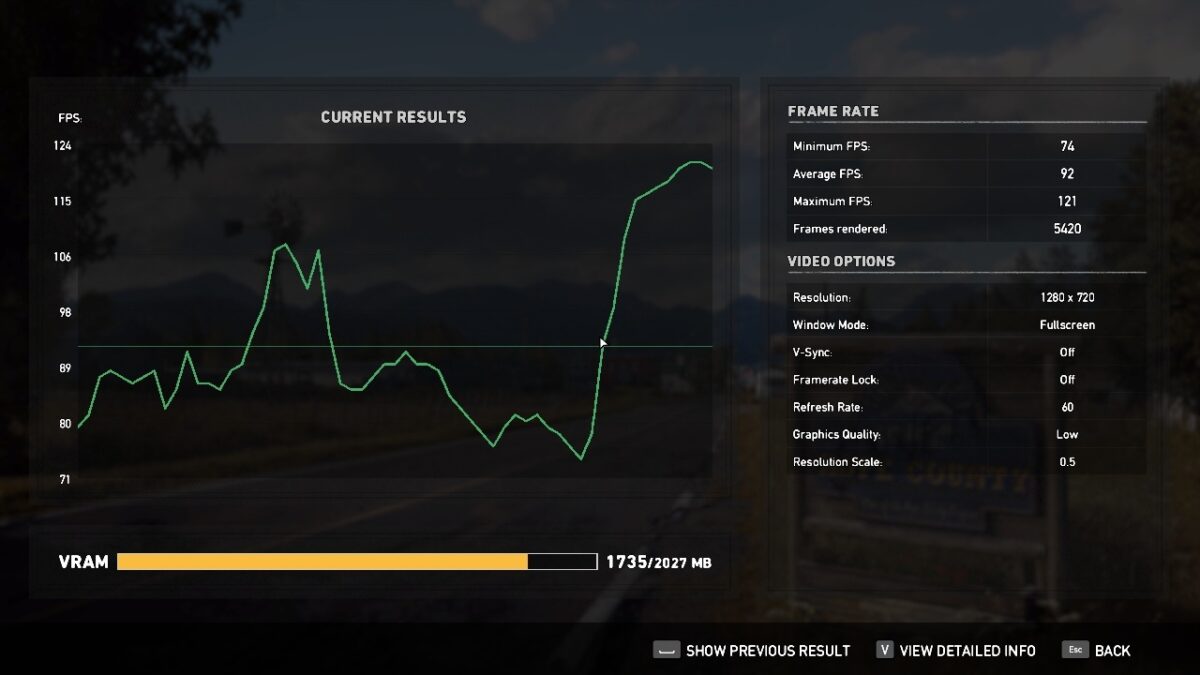
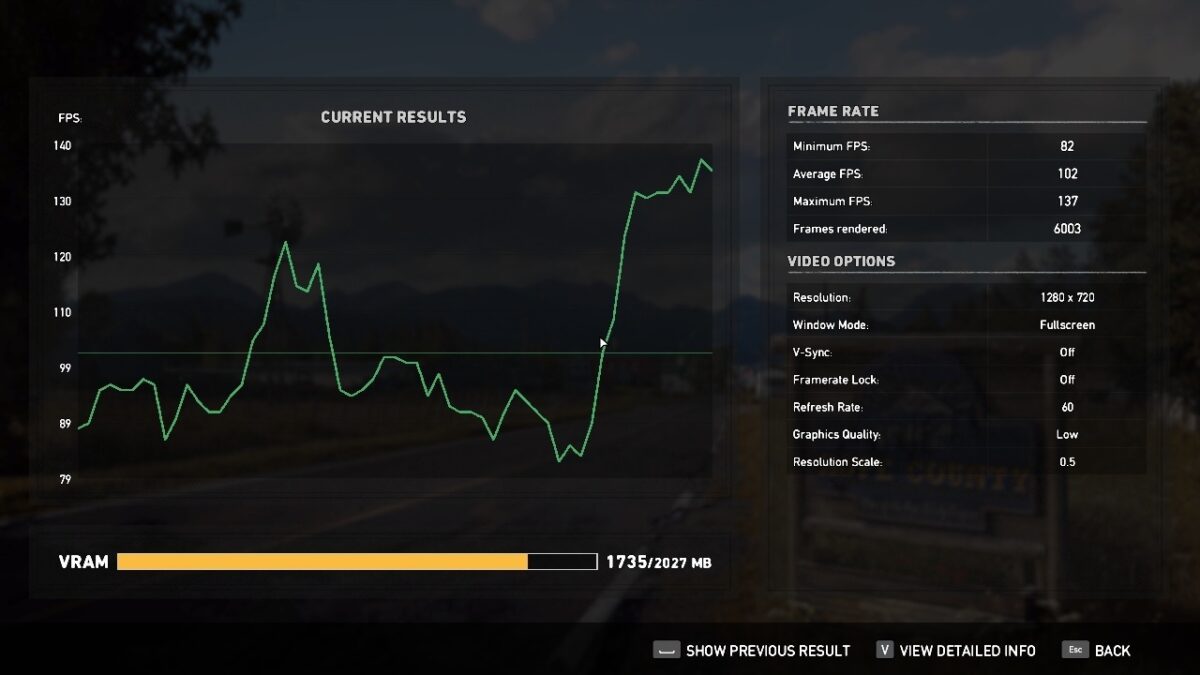
| Far Cry 5 | Average FPS | Min FPS |
| X5660@2800-3066MHz | 70 | 57 |
| X5660@4057MHz | 92 | 74 |
| E5-2620v3@3200MHz | 102 | 82 |
| Gain from overclocking | 31.42% | 29.82% |
| Difference between X5660@4057MHz and E5-2620v3@3200MHz | 10.86% | 13.88% |
Watch Dogs Legion
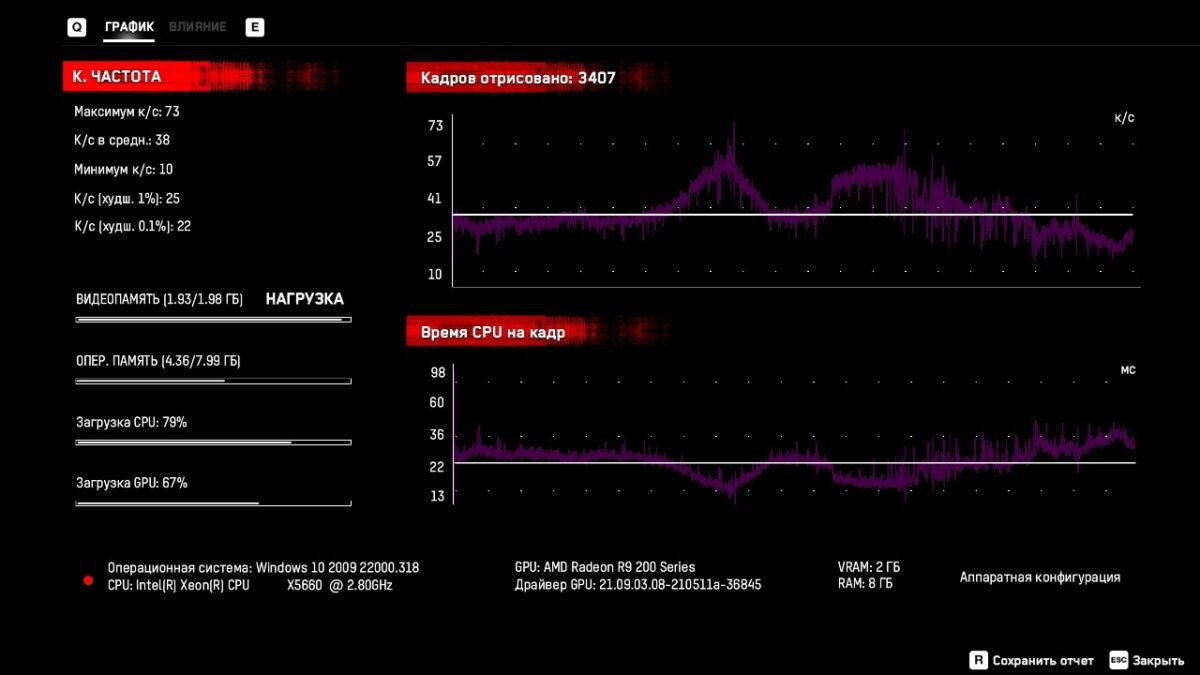
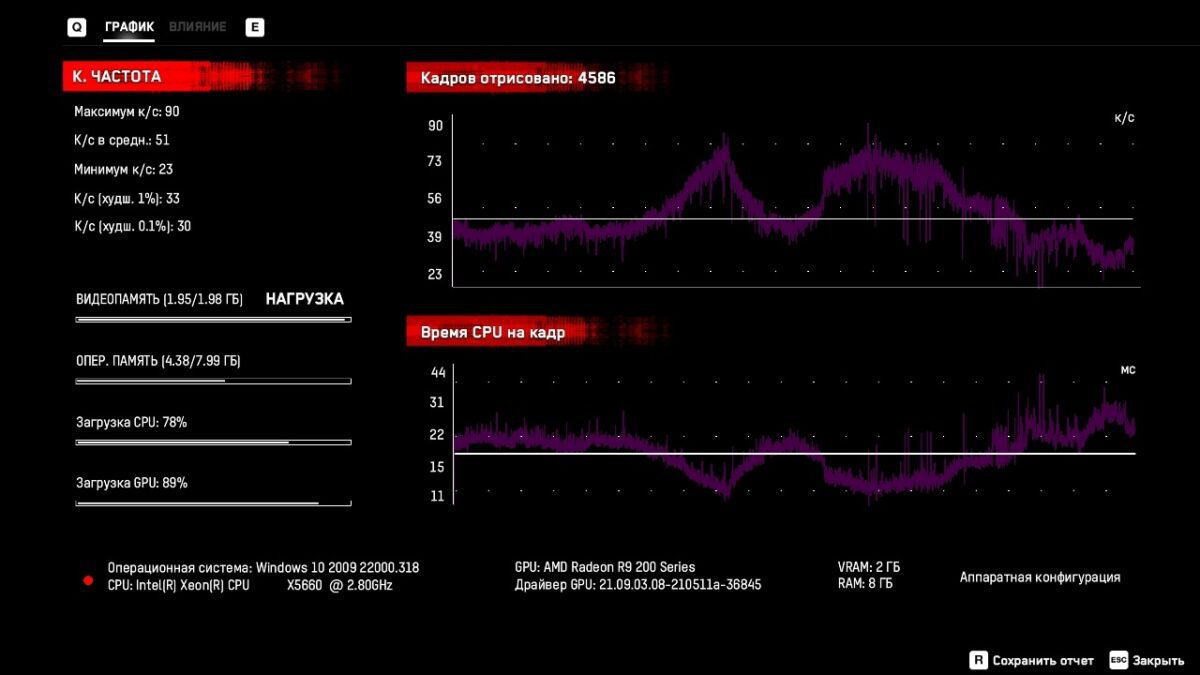
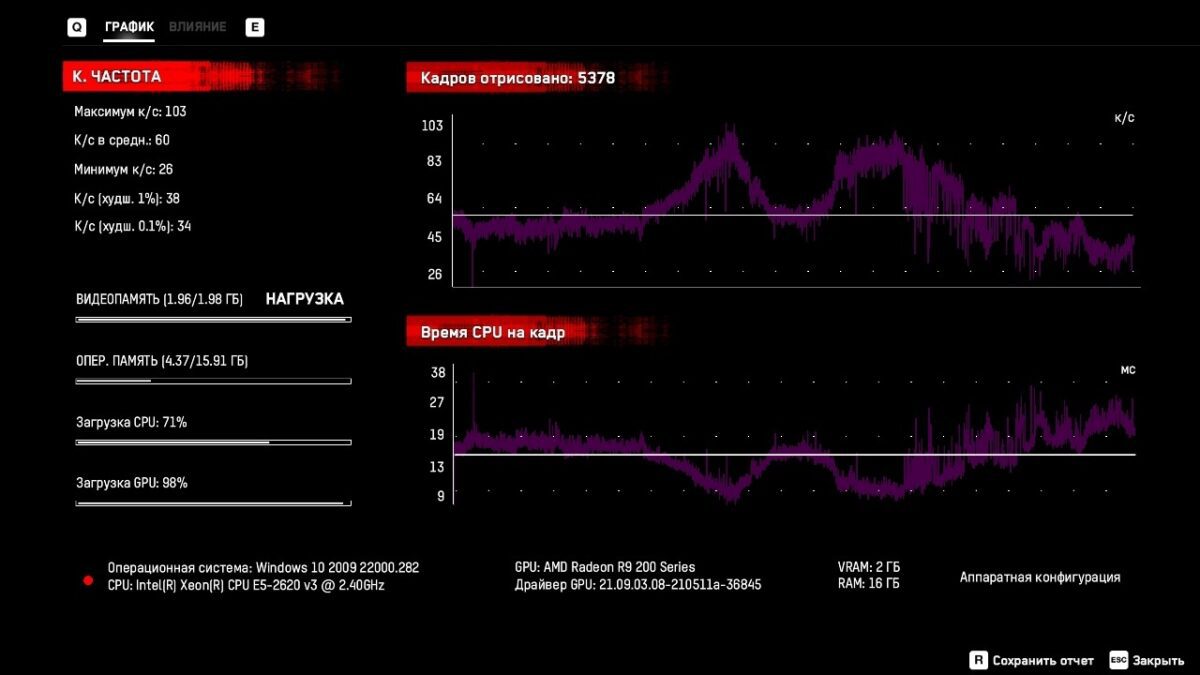
| Watch Dogs Legion | Average FPS | Min FPS |
| X5660@2800-3066MHz | 38 | 10 |
| X5660@4057MHz | 51 | 23 |
| E5-2620v3@3200MHz | 60 | 26 |
| Gain from overclocking | 34.21% | 129.99% |
| Difference between X5660@4057MHz and E5-2620v3@3200MHz | 17.64% | 13.04% |
In gaming tests, the average increase from overclocking was only ~32%, which, in principle, coincides with the increase in clock frequency, but against the background of software benchmarks, it looks a little less impressive.
Conclusion
Unfortunately, our copy of the Xeon X5660 processor turned out to be extremely unsuccessful. But speaking frankly, the achieved 4057 MHz is not the worst result. In fact, this is the lowest bar for overclocking 32-nm chips of the first wave, which we talked about in one of the previous materials on our site. Approximately 80-90% of all existing 6-core Westmere-EP processors will be able to “take” such a frequency (with the exception of very low-frequency CPUs). In our opinion, this is quite an acceptable result for an 11-year-old processor.
Well, at the end of the material, we can give a conditional answer to the question posed at the very beginning: no, the older processor model will not guarantee a higher overclocking potential only due to its position in the model range. It all depends on the luck of each particular instance of the CPU. However, it is worth clarifying that, in theory, choosing expensive models, the notorious chance of drawing out the cherished lucky ticket is slightly higher than that of cheap models with a low base frequency.
In our case, the weak overclocking potential can be attributed to the advanced age of the tested Xeon X5660 sample.
If this material was useful to you and you would like to see more similar articles on this resource, then please support our site on Patreon! The main goal of fundraising is to expand the component park and improve the quality of testing: replacing the HDD with a voluminous SSD, buying a capture card to reduce the impact of gameplay recording using ShadowPlay on the final results, and so on).
